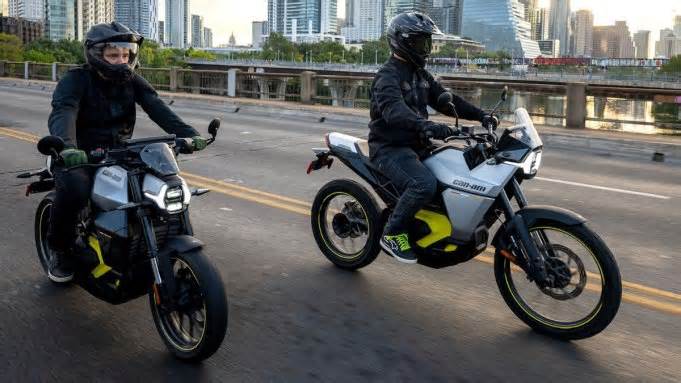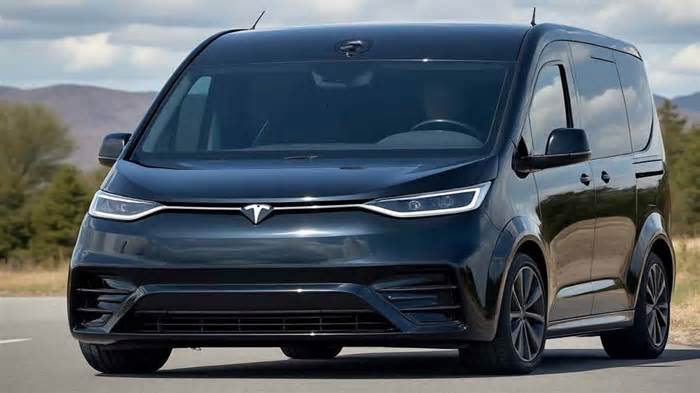
Review: Can-Am’s First Motorcycles in Decades Are Electric. Here’s How They Rate.
- by Robb Report
- Sep 29, 2024
- 0 Comments
- 0 Likes Flag 0 Of 5

Can-Am
For model year 2025, Can-Am’s highly anticipated electric motorcycles will finally hit the market. Dubbed the Pulse and the Origin, these two bikes represent the company’s first two-wheeled products since 1987, but each runs counter to current trends in the e-motorcycle industry. Rather than trying to max out range or power, Can-Am decided to keep the bikes light enough to maneuver through traffic, making them perfect for beginner riders.
Related Stories I Learned How to Fly This Electric Aircraft in a Week—and I Didn’t Need a License
Can-Am projects that the potential market for electric motorcycles could number 95 million customers globally—a seemingly unrealistic number given today’s almost nonexistent sales. However, Can-Am is hoping that the Pulse and Origin set the industry standard in the same way that Tesla established a new EV market a decade or so ago.
The Can-Am Origin (left) and Pulse (right) electric motorcycles.
Can-Am
The Pulse slots in as the more approachable model, with a low 30.86-inch seat height and comfortable ergonomics to go with a curb weight of 390 pounds. The design trends toward popular futurist themes, with stylistic paneling that resembles a mix of the Husqvarna Svartpilen and Ryvid Anthem. An electric motor rated at 47 hp allows for a claimed zero-to 60 mph time of 3.8 seconds, while the liquid-cooled 8.9 kWh battery should be good for 100 miles of city riding, or 80 miles of combined city and highway.
Yet as our time testing it in and around Austin, Tex., showed, that output figure shouldn’t be taken at face value. Instead, instantaneously available torque matters more—allowing the Pulse to almost, but not quite, power a wheelie at full throttle in the Sport+ ride mode. Throttle response dulls down noticeably in Normal mode, though, so after the first few minutes, we spent the entire ride in Sport+. Of course, doing so eats into range quickly, but we also spent most of our time on long, straight stretches of two-lane highway, exactly where electric motorcycles perform the worst due to aerodynamic inefficiency.
Saddle time with the 390-pound, 47 hp Can-Am Pulse.
Can-Am
The design and engineering decisions made for both models cater more to the urban electric-motorcycle buyer. The top speed is electronically limited to 80 mph, which maximizes those claimed range figures. Yet the ability to accelerate (for example, when needing to avoid sketchy situations) could be improved, and would help make the ride not only more enjoyable, but likely safer, as well.
Meanwhile, the 10.25-inch touchscreen allows for Apple CarPlay via a USB port in the 1.7-liter storage cubby atop the “tank.” Activating CarPlay requires connecting a Bluetooth communication device to use Siri, however, such as a Cardo Packtalk Edge. The gauge cluster itself is configurable and easy to read, but in the name of safety turns off its touchscreen capability while the bike is in motion, so switchgear on the left grip also allows for switching between ride modes and readouts.
The liquid-cooled 8.9 kWh battery in the Pulse should be good for 100 miles of city riding, or 80 miles of combined city and highway.
Can-Am
Both bikes share many of the same components. The e-motor lives within the swingarm, directly near the hinge point, and powers the rear wheel via an enclosed chain system borrowed from Can-Am’s snow machines. The system is almost entirely silent, and the use of chain versus the more typical belt employed by other companies allowed Can-Am to program two regenerative braking systems, one active and one passive. Both allow for the selection of three settings: Off, Min, or Max. The passive regen activates by rolling off throttle, almost akin to engine braking or regen in most EVs, while the active-regen system represents more of an innovation, allowing the rider to then twist the throttle forward to engage more braking power.
Using different wrist muscles requires a bit of an adjustment period, but active regen works quite well—other than the fact that it turns off when the speed drops to around 2 mph, meaning that we couldn’t come to a complete stop without using the traditional brakes too. It actually works even better on the Origin, the dual-sport model. While testing the increased 10.8 inches of ground clearance in the dirt, the regen allowed us to easily slow down the rear tire by hand, instead of the foot lever as on a more typical motorcycle.
Taking the Can-Am Origin out for off-road exploration.
Can-Am
Still, the taller Origin, with styling almost akin to a Dakar Rally race bike, nonetheless weighs more than the Pulse thanks to longer-travel KYB suspension components, bigger wheels ( 21-inch front and 18-inch rear) shod in knobby tires, and additional body cladding. And in off-road applications, the somewhat unrefined suspension and top-heavy nature of the bike make it a little unwieldy.
Surprisingly, we actually preferred the Origin for on-road riding rather than the lower and lighter Pulse. The knobby tires and additional suspension travel communicate more to the rider, whereas the Pulse is smooth enough to feel somewhat anaesthetized. Neither bike creaked nor rattled very much, part of Can-Am’s goal to reduce noise, vibration, and harshness.
As with the Pulse, the e-motor of the Origin lives within the swingarm and powers the rear wheel via an enclosed chain system borrowed from Can-Am’s snow machines.
Can-Am
The Pulse and Origin are clearly well-thought-out models, but they don’t excel in any one area. Over the course of a full day in the 106-degree Texas heat, the temperature resulted in the regen capabilities dropping out at times, and adversely impacted range, necessitating multiple charging stops. Liquid cooling can only do so much, though Can-Am claims that the battery can manage replenishing from 20 percent to 80 percent in only 50 minutes at a max rate of 6.6 kw using a Level 1 or Level 2 charger.
Starting prices for the Pulse and Origin are $13,999 and $14,499, respectively, which deliberately slots in below the entry-level EV models from Zero Motorcycles and LiveWire. The range and performance, however, seem a little harder to justify versus similarly priced, conventionally powered bikes. And the fact that the encased chain requires fluid changes also adds a level of maintenance and potential messiness that most other electric bikes do away with.
Starting prices for the Pulse and Origin are $13,999 and $14,499, respectively.
Can-Am
At the very least, in the bumper-to-bumper Austin traffic, no gasoline engine radiated excessive heat into our thighs. Even if not quite as exciting as the hype originally suggested, both the Pulse and Origin do represent solid options for city commuters and new riders alike.
Click below to see more photos of the Can-Am Pulse and Origin electric motorcycles.
The Can-Am Pulse and Origin electric motorcycles.
Can-Am
Please first to comment
Related Post
Stay Connected
Tweets by elonmuskTo get the latest tweets please make sure you are logged in on X on this browser.
Sponsored
Popular Post
Tesla: Buy This Dip, Energy Growth And Margin Recovery Are Vastly Underappreciated
28 ViewsJul 29 ,2024






 Energy
Energy



















